The female experience is vast, layered, and deeply personal, yet it resonates universally. Across Africa, contemporary female artists are reclaiming narratives, telling their own stories, and challenging outdated perceptions of womanhood. Through paint, sculpture, photography, and mixed media, these artists are giving voice to the struggles, joys, and complexities of being a woman in today’s world. Their art is not just visual—it’s a conversation, a movement, a call to see women beyond stereotypes. Let’s see how artists like Mary Sibande, Wangechi Mutu, Zanele Muholi, Billie Zangewa, to mention a few, interpret the female experiences in their works.
Mary Sibande
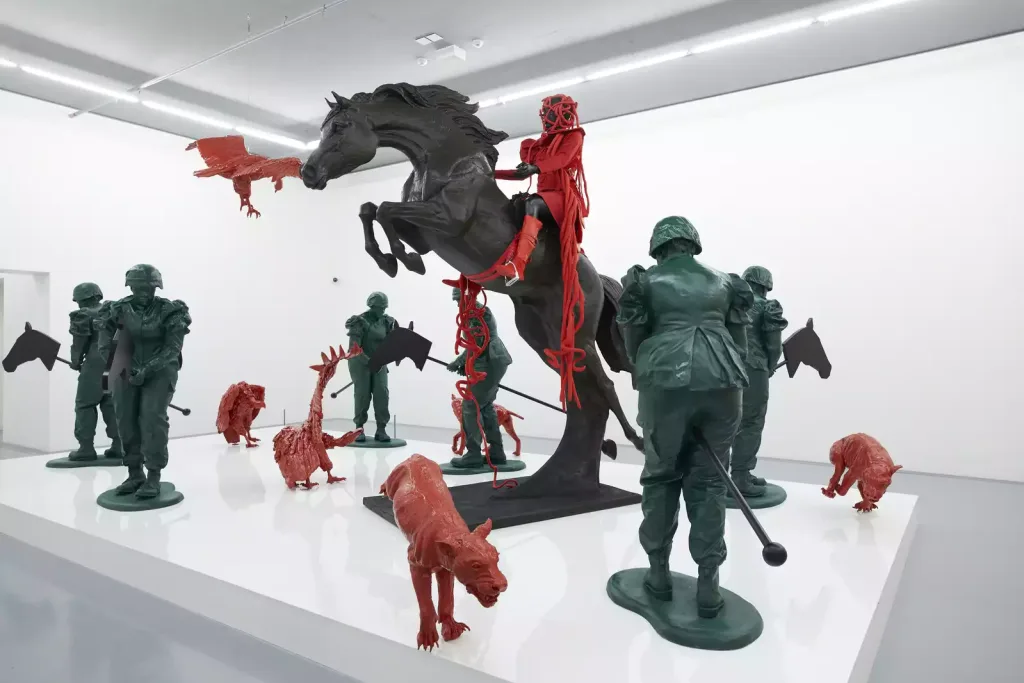
Medium: Fibreglass, vinyl, metal, painted wood, 100% cotton, and polyester fiberfill. Image courtesy: Artsy
Mary Sibande’s art pulses with the weight of history and the power of reimagination. Her iconic character, Sophie, a life-size sculpture dressed in Victorian-era garments transformed into a superhero-like figure, is a tribute to the generations of Black South African women who were confined to domestic labor. But Sophie is no passive figure—she dreams, she reclaims, she transforms. Sibande’s work challenges societal norms, showing women not just as workers but as dreamers, rebels, and leaders. Through her vibrant purples, blues, and reds, she paints a future where Black women dictate their own destinies.
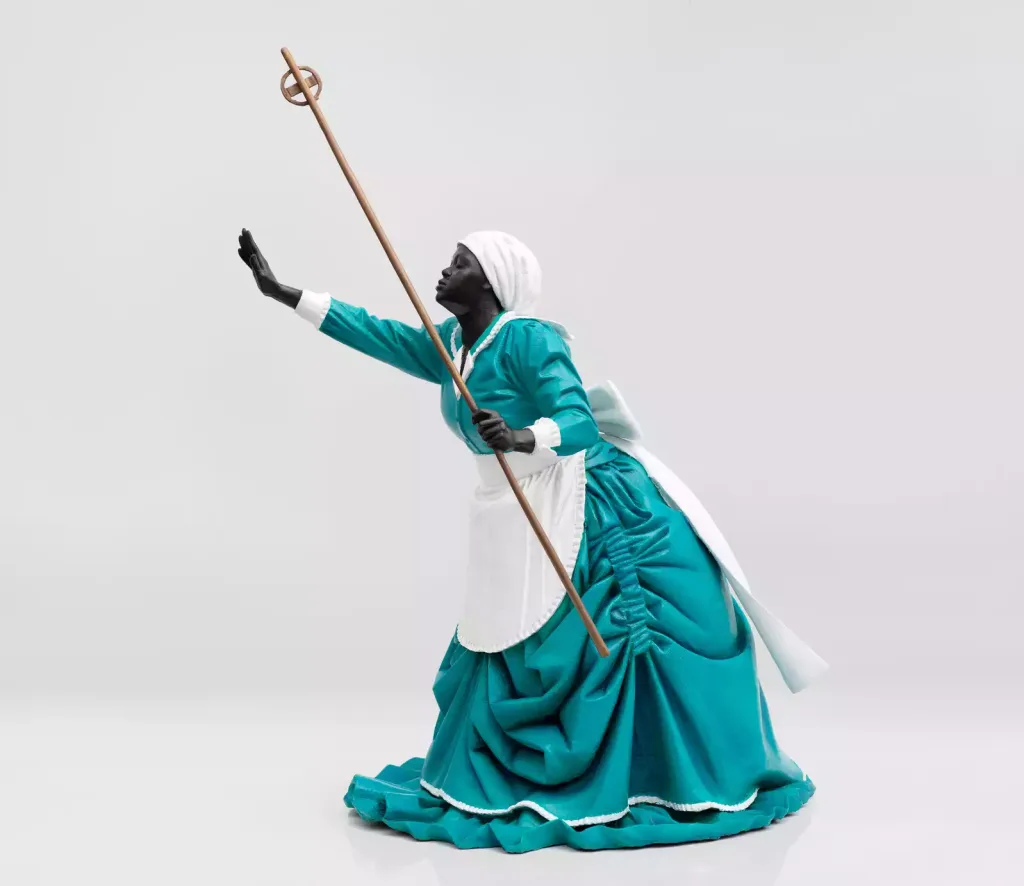
Wangechi Mutu
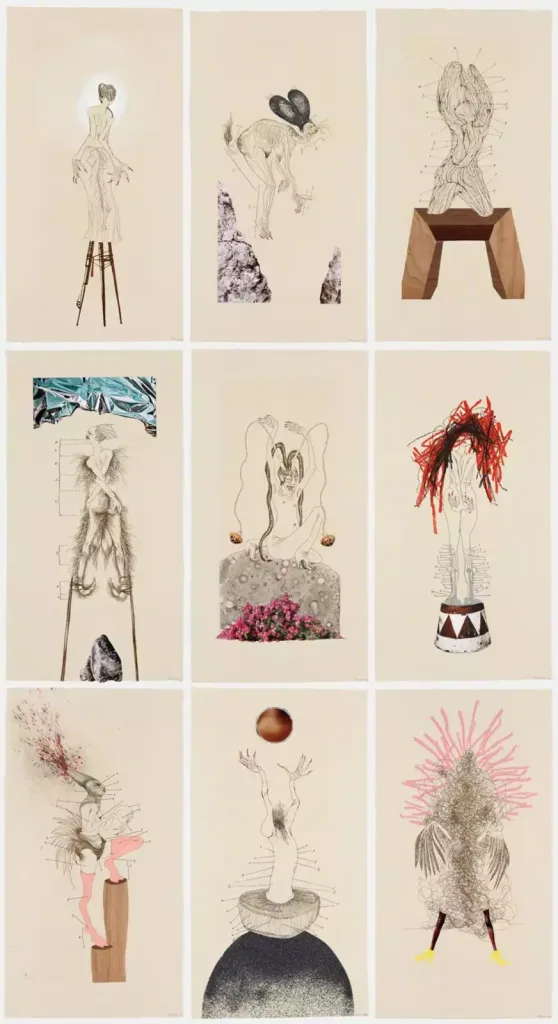
Wangechi Mutu doesn’t just depict women—she reconstructs them. Her collage-like figures, often part human, part machine, part myth, reflect the fragmentation and resilience of African women. In her hands, the female body is a battleground, a canvas of scars, strength, and surreal beauty. Mutu’s work is a response to the objectification of Black women, the historical erasure of their stories, and the need for new mythologies. Through her otherworldly women—part goddess, part warrior—she invites us to rethink beauty, power, and identity.
Billie Zangewa
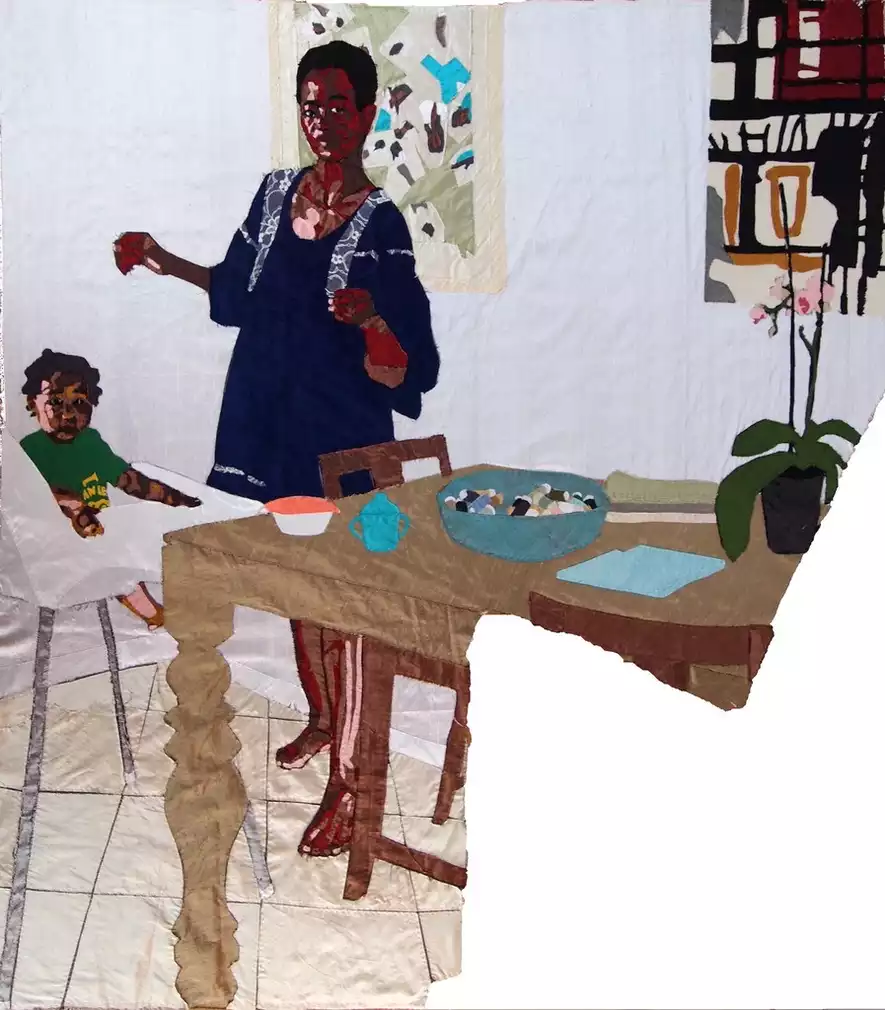
Billie Zangewa’s art is intimate, soft, yet profoundly powerful. She doesn’t depict grand revolutions or towering heroines—her battlefield is the everyday. Through hand-stitched silk tapestries, she captures quiet, uncelebrated moments of womanhood: a mother cradling her child, a woman enjoying her solitude, a simple act of self-care. These moments may seem small, but in Zangewa’s hands, they become sacred.
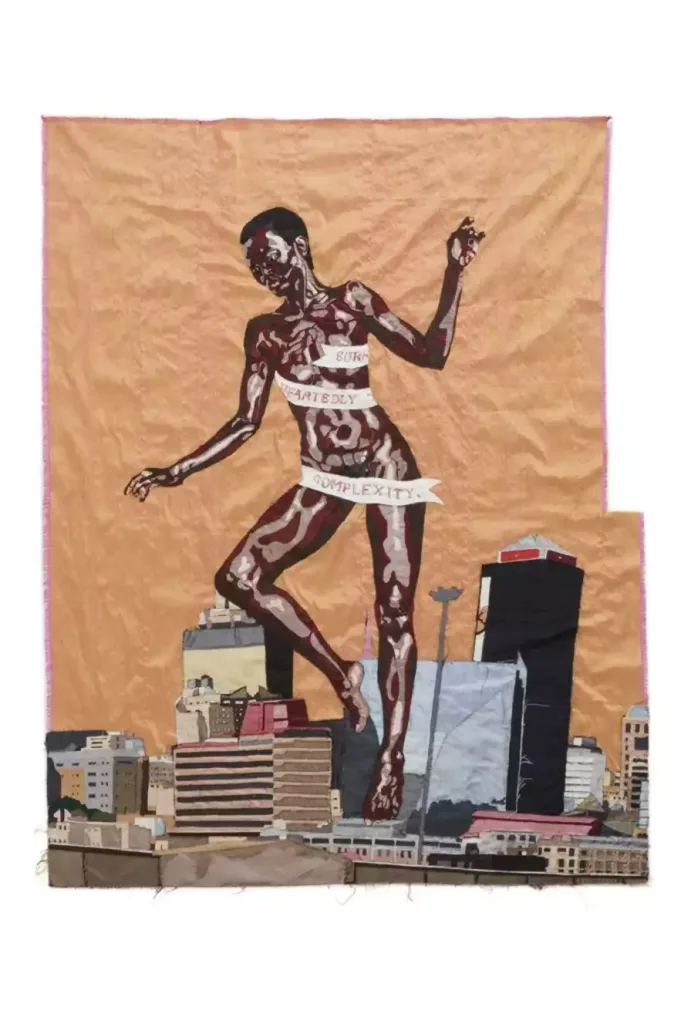
Her work is a direct response to the way society often overlooks the labor of women—the emotional, physical, and mental work they do daily. By using delicate silk, she challenges the idea that strength must be loud or aggressive. In her world, tenderness is power, domesticity is resistance, and the simple act of existing unapologetically as a woman is a radical statement. Zangewa doesn’t shout—she whispers. And in that whisper is an undeniable truth: women’s lives, in all their complexity, deserve to be seen, honored, and stitched into the fabric of history.
Thandiwe Muriu
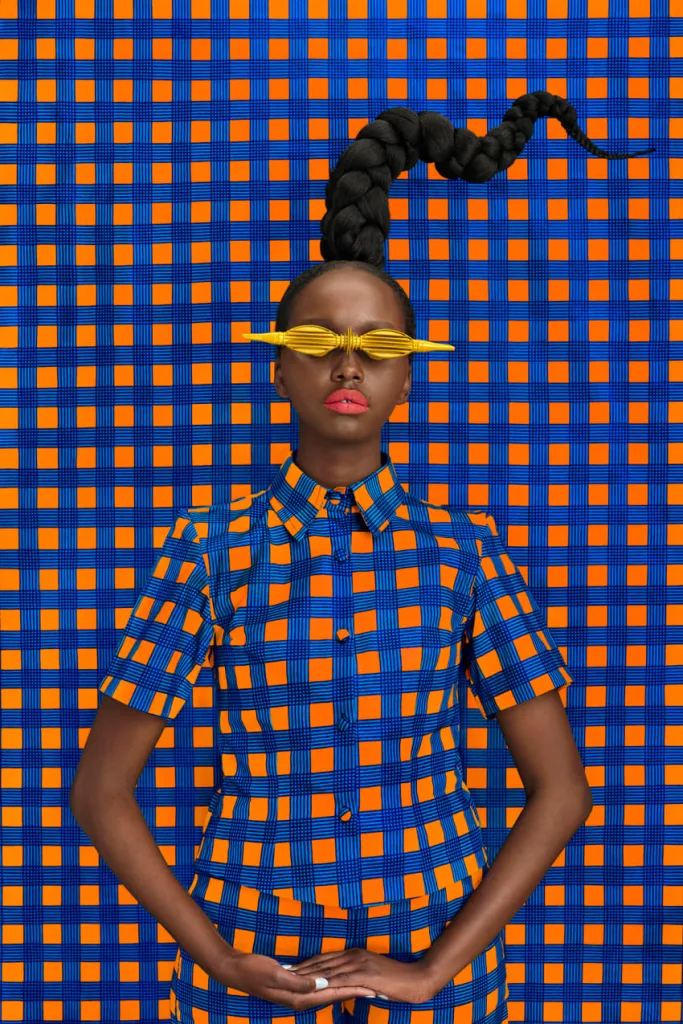
Thandiwe Muriu’s portraits are a celebration—bold, bright, and unapologetically African. Her photography series, Camo, plays with patterns and colors to explore African beauty standards, identity, and self-representation. In a world where Eurocentric ideals often dominate, Muriu reclaims African aesthetics, showcasing the vibrancy and richness of Black beauty. Her subjects, adorned in intricate textiles and bold accessories, stare straight into the camera—proud, confident, and unafraid. Through her work, she challenges the idea of beauty, proving that it is diverse, dynamic, and deeply rooted in culture.
Njideka Akunyili Crosby
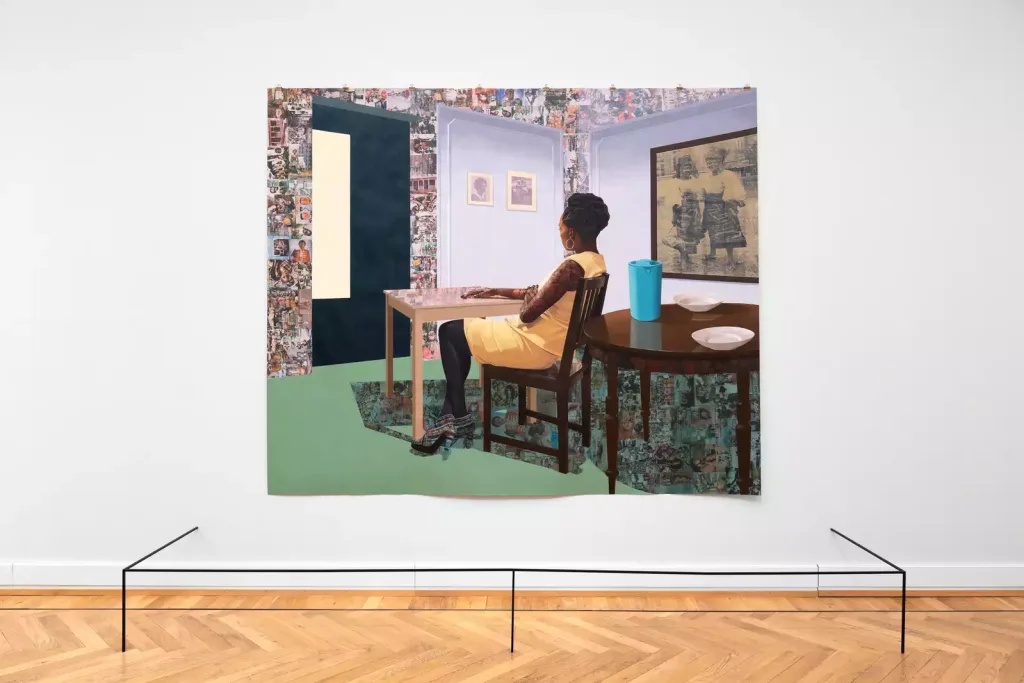
Njideka Akunyili Crosby’s work feels like home—if home were a layered, intricate tapestry of memory, nostalgia, and reality. Her mixed-media paintings are rich with personal history, blending Nigerian and Western influences to explore the duality of identity. The women in her work are neither here nor there; they exist in the liminal space between cultures, between expectations, between the past and the future. Through her intricate, intimate compositions, she tells stories of love, family, migration, and the silent yet profound ways women carry the weight of history.
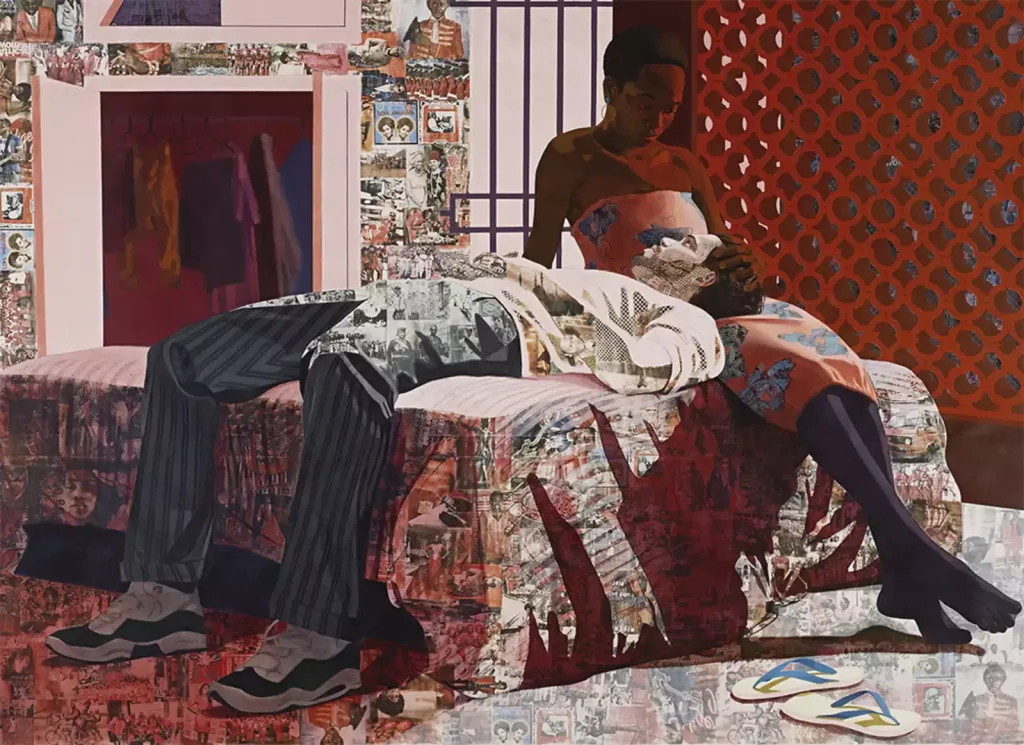
Aida Muluneh
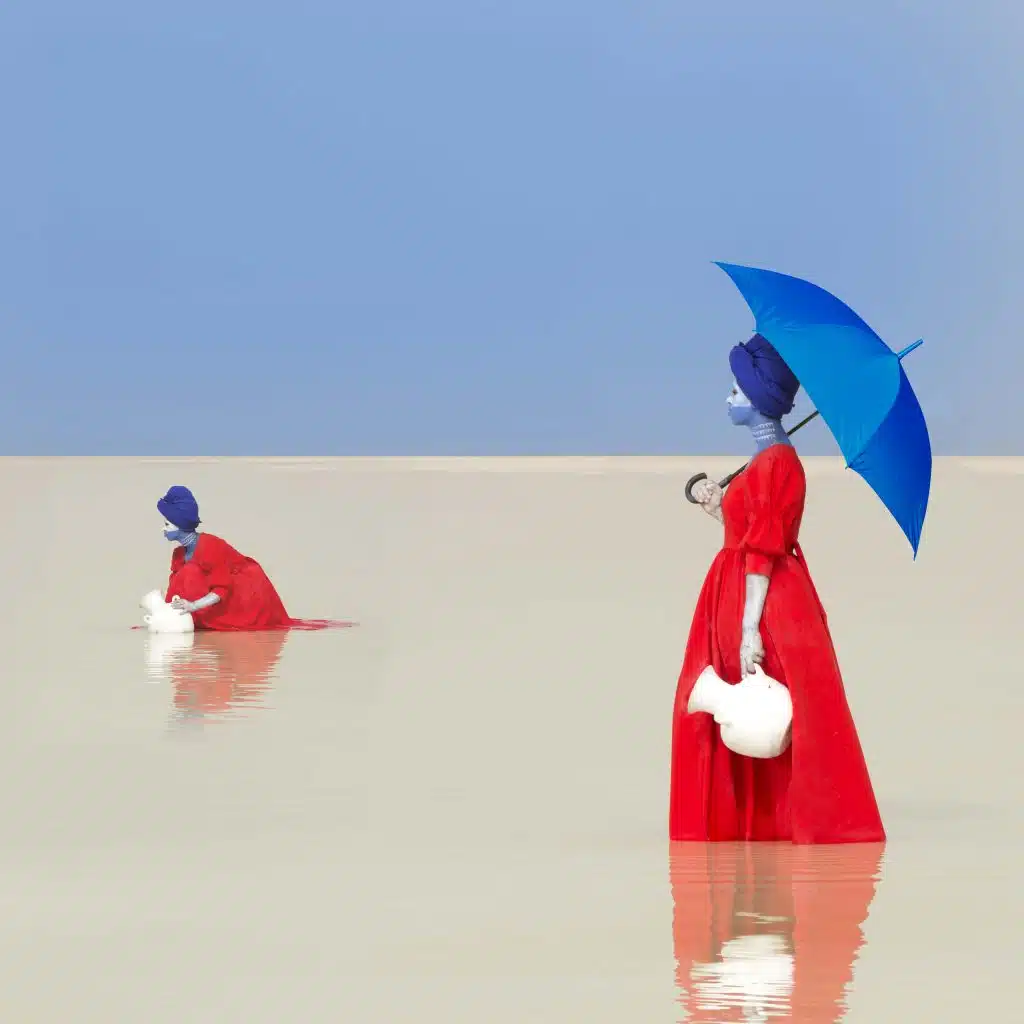
Aida Muluneh’s photography speaks in symbols. Her striking images—women with painted faces, bold primary colors, and surreal backdrops—are more than just visually stunning; they carry the weight of untold stories. In her series The World is 9, inspired by an Ethiopian proverb, she explores themes of resilience, displacement, and the silent battles women endure. The women in her photos don’t beg for attention—they demand it. Their eyes pierce through the frame, as if daring the viewer to look beyond beauty and see the struggles, hopes, and quiet revolutions etched into their existence. Muluneh’s work is a reminder that even in silence, women’s stories are loud, urgent, and necessary.
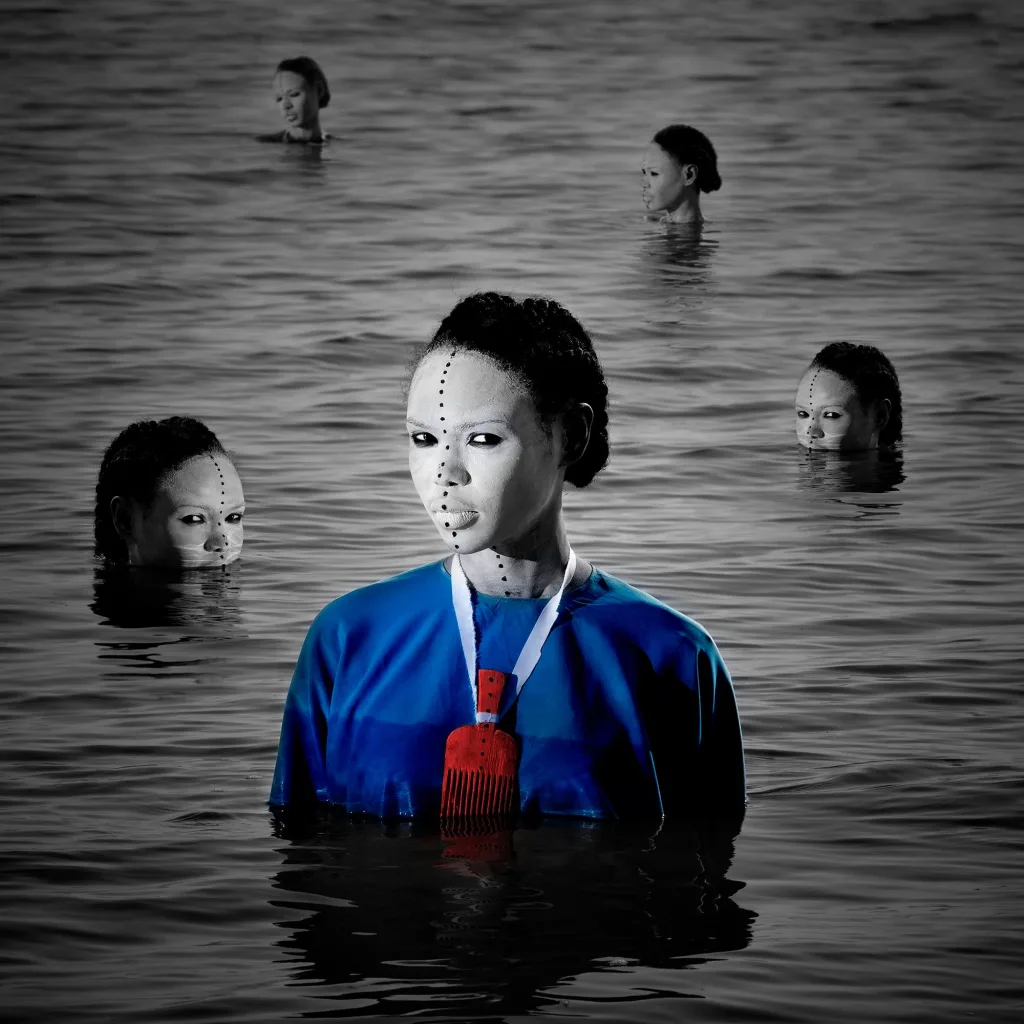
Lina Iris Viktor
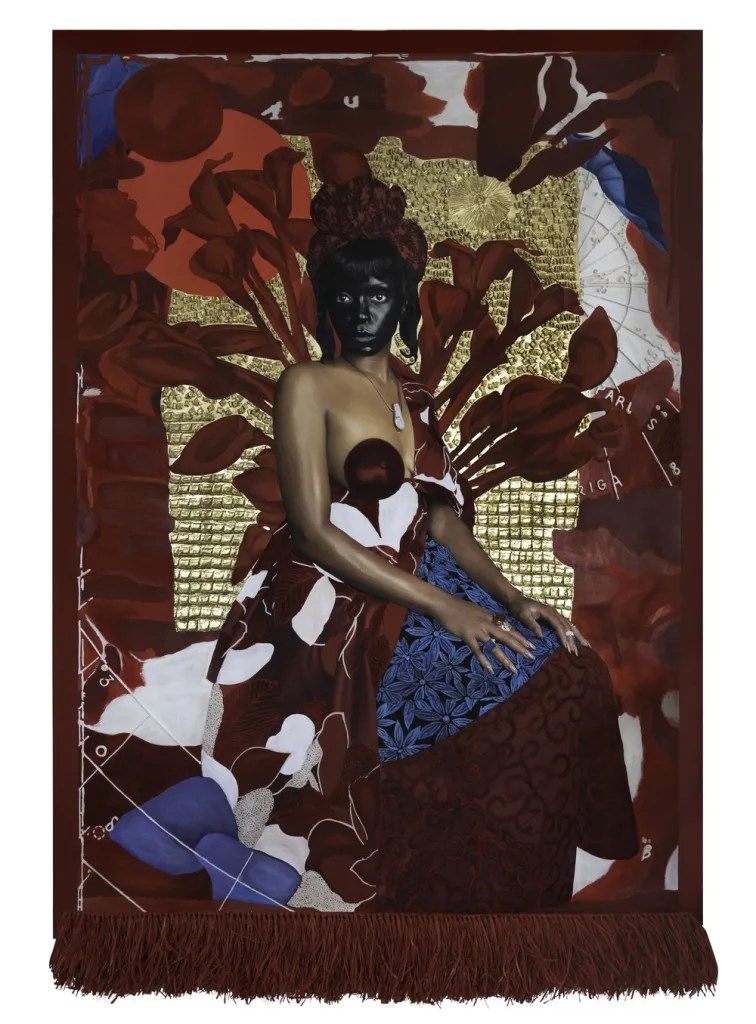
Lina Iris Viktor doesn’t just paint—she elevates. Using 24-karat gold, deep black hues, and celestial compositions, she reimagines the Black woman as divine, eternal, and untouchable. Her work is reminiscent of ancient iconography, but with a modern twist: it rewrites history, placing Black women at the center of power and reverence. In a world that often diminishes the presence of African women, Viktor does the opposite—she immortalizes them in gold. Each piece is a proclamation that African women are not just part of history; they are history, radiating brilliance and resilience across time and space.
In a world where women, especially Black African women, are often reduced to roles of service, silence, or struggle, the work of these artists redefines womanhood as powerful, complex, and ever-evolving. Each stroke, each image, each sculpture is a declaration: We exist, we feel, we resist and we dream.
The female experience is not one story—it is millions. And through their art, these women ensure that those stories are seen, heard, and remembered.


